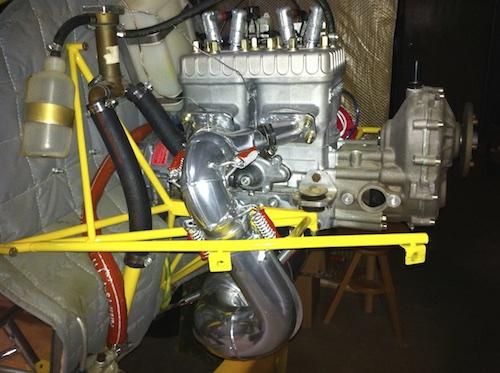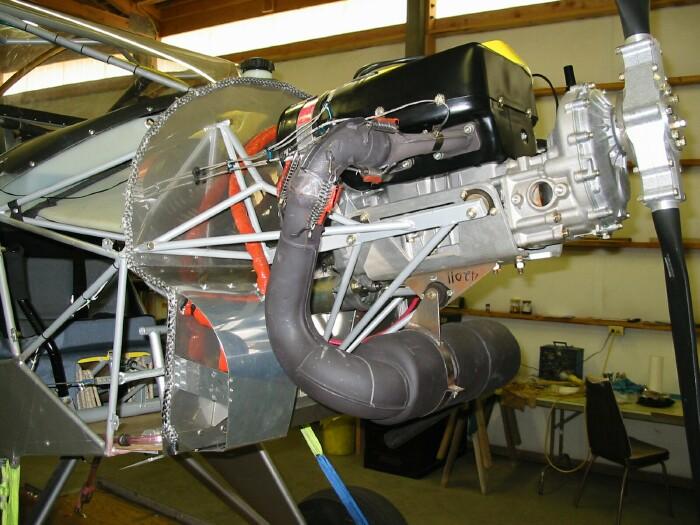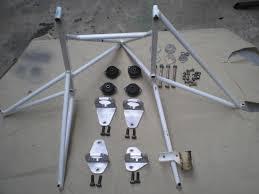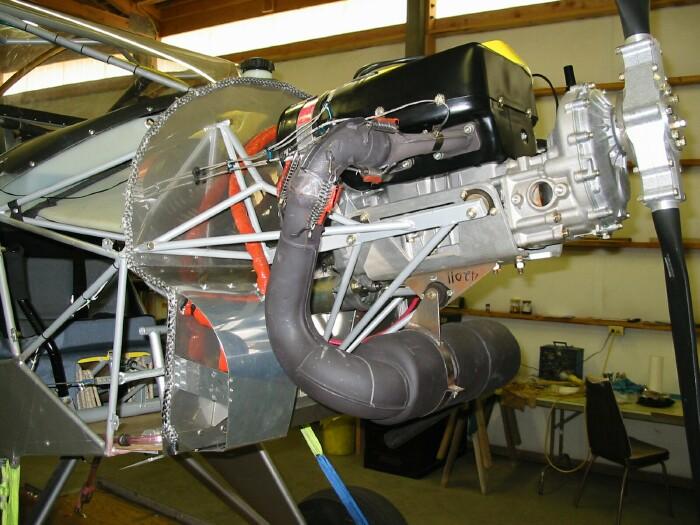
zadwit
Members-
Content count
294 -
Joined
-
Last visited
Posts posted by zadwit
-
-
I think JIm has what I need. He said he would call today sometime....Mark
-
OK will try him. Thanks again..!!
-
OK I see the problem... Ill try this fix and see how it works. Thanks guys.!!
Mark
-
So was it the bottom end of the brake cylinder that you moved closer to the rudder pedal mount tube? (the long cross bar that anchors the lower part of the brake master cylinder???? Thanks, Mark
-
-
What is an "E3" instrument?????
exfaa@outlook.com
Mark Smith
-
It has clear lines and I could see the air bubbles go up to the remote reservoir, I pumped a good quart of 5606 fluid thru the system. I carefull moved the brake slave cylinders on the torque pins to check for binding and non found then I lubed them lightlhy with auto disc brake pin lube, a very thin coat. I might be possible for them to cock and bind maybe under pressure but Ill keep[ messing with it and try to figue it out..
-
It has all Matco W62 wheels and hydralic brakes and brake cyliders with a remote reservoir. I careflully bled the air.. In alaska we put aeroquip 303 hose on a cub for brake lines and it didnt work worth a damn. The brake lines were in fact expanding so the brakes never felt stiff, only soft, they worked but not well. Nowsay people use either ridgid lines or small teflon lined stainless brake line and they work better...
I installed the double calliper setup as shown by Matco. Still my master cylinders only produce 220psi if I stand on the pedal hard, very hard... It needs a small diameter cylinder I think. There are brake intensifiers from Matco that make the master cylinder 1/2 piston in stead of .625 dia piston so maybe that will work.....I dont think I can make the top of the brake redal taller as my right foot toe fould on the throttle cable belcrank... I could move that I guess..... Matco says I need 450psi for the brakes to work right....its got me stumped.....mark smith
exfaa@outlook.com
907-378-9632
-
sorry for the late reply... I cant hold the plane with the brakes above about 3000 rpm even with dual calipers on each wheel . I installed a pressure guage on the wheel cylinder and I am only seeing 220psi if I stand on the brake pedal really hard.... I talked to matco engineering and he said the brake pedal geometry is wrong, however looking at my brake pedals, they are stock kitfox IV pedals and I dont see how to get any more mechanical advantage.....A small master cylinder might make more pressure....Im stummped for now....
I removed my 503 rotax and am trying to install a blue head 582 new engine... I have a different mount coming that has two vertical rails on each side and 4 small aluminum brakets that bolt on the corners of the engine...even that Im running into problems.. I have 3 of the mounts on but the left front side of the engine has one 8mmx1.5mm bolt and one hole is smaller and off center . I know I have to drill and tap and new hole and I am guessing with the mount so it is horizontal and vertical with teh engine....the new hole would be right next to the smaller hole but if I use that the mount bracket will be crooked.....
-
IT was so fine you could not see it but it plugged those paper filters right up...
-
I just didnt know.. .Vance Simmons told me so I replaced all my paper filters with screens and no more problems.
Yes, sea foam in the wing tanks. I was trying to clean out the varnish from the stale gas and sea foam did that but it plugged the paper fuel filters......
-
I used to overhaul lycoming and continental engines in Alaska....I saw lots of lead sludge in the engine especially in the crankshaft bore...There is too much lead in teh fuel and it gets into the lower parts of the engine.....not good...anyplace with centrifugal action will make the lead precipitate out and cause problems esp with roller bearings.....Id limit my use, keep the engine leaned when flying, use lead scavenger agents like TCP or other treatments and change the oil whenever it get dark or green colored.....a little lead is OK. one gallon of avgas 100 to 9 gallons of cheap unleaded car gas will raise the antiknock index up to around 100 in testing we did up there... but any more lead than that , not good...
having said that, avgas 100 is stable and will sit in a tank for a long time, 2 or 3 yrs and still work, not so with car gas...
-
SEA FOAM BEWARE!!!
Ive used sea foam for years... I bought a ridge runner that sat for 4 years and had stale fuel in it even though the last owner put stablizer in the fuel.
Anyway I sloshed several cans of sea foam in each tank and drained it all out. Then I filled with fresh gas and put sea foam in to help clean out the carbs. I had it running just fine. Then I flew it....about 1 hours. I noticed my fuel pressure guage was at about 4psi and starterd to get lower around 3 psi, then after another hour down to about 2 psi ... I thought it was the fuel pump so replaced it.. same problem....I had in line filters(paper) and the sea foam and varnish in teh tanks plugged the filter.. It would not gravity drain and was very hard to blow thru. Replaced the filter and 2 hours later same problem.. so DONT USED SEA FOAM with paper filters.....
I have screens in all my locations now and no more problems... I guess the fuel goes thru the screen and gets burned up in teh engine.... Sea foam is good, it will clean things out but it will also plug up a paper filter of which most are....
-
-
I desperately need a kitdfox 4 engine mount for a 582 rotax engine.... I am in Davenport, Wa.
907-378-9632
exfaa@outlook.com
Thanks, Mark Smith
-
Well I have myself in a pickle again. I have this nice model 4 kitfox that was built with a 503. I have a582 I want to install .. I ordered a new mount from Kitfox and turns out it is the same mount I have on this plane . The problem is , when I try to set the 582 into the aluminum cradle, the carbs hit on the left side... There must be some other kind of aluminum cradle me thinks....Does anyone have a photo of a 582 in a model 4 so I can see what I am missing...?? MY engine mount steel has two rectangluar tubes that are at an angle to teh eninge and then the aluminum cradle fits into that. THere are 4 dynofocal mount between the aluminum cradle and the steel engine mount....Ill try to post a photo.....of my set up with the 503 egine,....I dont know if I have to change the steel mount or just the aluminum craadle????Thanks in advance.....Mark Smith
exfaa@outlook.com
-
There is not much of a groove to hold the carb rubber socket on and with all that shaking and then get fuel on it and all bets are off......
-
Also I keep getting my right toe caught under the throttle lever above the right rudder pedal.. I have sz 14 feet... maybe I need to cut off my toes...
Ive seen some people put flat metal on the rudder pedal that still allows the brake to be applied... not sure what to do...I have to use my toes to work the rudders......kinda hard....
-
On my KF4 with 503 Rotax , I installed matco 6" wheels and brakes and 8:00-6 tires... THe brakes barely worked. I added another set of calipers to each wheel so now I have two brake calipers on each wheel and the brakes are better. I can hold the left brake and pivot around but i HAVE TO push prett y hard on the pedal....I tried conditioining the brake pads and that helped a little...
The second issue is I flew the plane the other day and at 6000 rpm, 2 blade WD prop = about 80.
I installed vgs on the wing and a new WD taper blade prop, same 72" diameter... now I cruise 85 at 6000 rpm but the nose wants to rise and the flap handle is all the way down....
IS it ok to adjust the flap handle to go lower to be able to trim the plane? Are the VGs makeing the wing create more lift or is it just the extra 5mph speed????its got me stumped.
IT will stall about 35 flaps up and I saw speeds as low at 30 flaps down but that was about it... the air was so rough again it was hard to get accurate speeds but they do seem to help.
I have grove gear and it sits too low....I can tell because when the plane comes off the ground it jumps up about 30 feet in the air like a rocket... I just cant get any more angle.... should have orderd 2" longer gear legs. Or I can insall bigger tires I guess....
-
Ive seen to retenstion systems... one is a long spring that goes from the front of the engine to the back and holds the carbs to the engine
the second I have seen and the one I use is .032 swisted safety wire... I secure it to the fan cover screw on the front or wherever you can, swist the wire and run it thru that hole on the carb body outside of the area of the slide, then thru the second one and then secure it tothe back part of the engine.....that way at least teh carbs cant fall off....
The photo below shows spring s holding it all in the engine....
1 person likes this -
I seem to remembver from my FAA inspector days, it is easier to bring the "C" registered plane to the US then do the import CofA and do a conformity check and re-register it with an US "N" number.........other wise a Canadain MOT guy has to to anm export Cof A and it is a pain in the A** for everyone........
-
in a stall, aerodynamic warning comes in the form of turblent air buffeting the tail... some airplane dont do this. that is they give little or no warning. Thin cambered airfoils are know for this. Believe it or not so is the super cub USA 35B modifield airfoil if the the flaps are up...roll a cum into a 45 degree bank and you are within 1 or 2 degrees of exceeding the critical angle of attack.....flaps down at all wil buffet the tail, the air gap between the fuselage and the flap end cause turblent air and shake the tail but flap up or cubs that are modified to run the flaps all the way intothe fuselage side to get more flap, get little warning....
-
The early kitfoxs and probably avids had small diameter struts and most important, the carry thru tube in the lower fuselage is what the lower lift strut attachs to and one failed in Australia. There is a CAA AD to check this area for cracks.... This is one reason the GW is lower on early models.
The second is the tubular spars are .062" wall thickness and the later models its is .083" I think or close to that...
Also there is a theory out there that at high speeds with the undercambered wing, the is a downward force on the front lift struts and if you get in turblence, the jury stuts can buckle and then the lift strut buckles and your done.... so Id fly very conservativly with an early model plane.
THe VNe speed was changed a little when you added the flaperon balance weights on to keep from flutter.....
-
Here is an interesting video circa 1938 about flat , uncambered and streamlined air foils. IF you look at the flat or undercambered airfoil, at high angle of attack the airflow seperated pretty far forward on the wing. This is why it is important to get the VGs up front, if too far back they are in "dead" air and cant do any good. I think Trent said 4% of the airfoil which I think is only 2" aft of the wing leading edge...
Also the undercambered airfoil has more drag than most airfoil even at 0 angle of attack. I guess they work on really slow very low powered airplanes but as kitfoxs amd avids got bigger and bigger engines, it reared its ugly head as a drag producer... one last thing and I am not sure it is talked about here but thin undercamberd airfoils can exhibit nasty stall characteristics without any aerodynamic warning......in fact I have read lots of accident reports , "I was in a 45 degree bank at 50 mph with 2 on board and it stalled"
ANyway I thought the video was of interest to all here. IT also shows how slats work...
1 person likes this


.thumb.jpg.9ca2fdece01f37a597ef66057bdae41c.jpg)


Matco break seal reference
in Avidfoxflyers General Hangar
Posted
Hi Fred, Sorry about your mishap... These kitfoxs and avids are not the easiest to control on the ground. Mine ate me a few weeks ago and I went the ditch with similar results. If I had decent brakes It would not have happened.
Anyway Ill will try to send a pdf of matco brake down. YOu have the early style brake slave cylinder so you might have to contact Matco by email. They are alive and well in business and very helpful. They told me I need to see 450psi at the brake slave cylinder to get good brakes. I put a buage on and I can only get 200-220psi if stand on the brake extremely hard. I added extra calipers, 2 sets on each wheel and it helped somewhat but still is not the fix. Matco also make an intensifier which is a .500" cylinder that fits inside your .625" master cylinder . Smaller piston makes more pressure. Ive been told by others it only helps a bit... The problem is the geometry of the brake pedal....
Matco has a complete reseal kit for your old style master cylinder, the one with large reservoir at the top of the master cylinder. This master cylinder is an MC-5, and I was told Kitfox used an MC-4, with a shortened piston rod. I was told if necessary to cut it off a little and rethread vbut I used my old MC-4s and resealed them. Hope this helps...
I think the O rings are just Buna N oil rings... you can soak one in 5606 hydralic fluid and see if it swells up but Im pretty sure that is what they are..
If you look at photo 005 you can see I might be able to redrill a new attach hole aft of the existing and get more leverage....will not have proper edge distance but better brakes are needed,.
Mark Smith in Davneport
Matco phone is 801-335-0581 in Woods Cross, UT 84087
FAX 801-335-0581
tech@MATCOmfg.com <tech@MATCOmfg.com>;
070513-072818 matco brake dwg.pdf